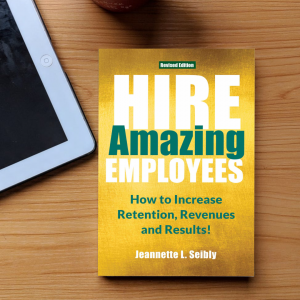
Being able to negotiate is not optional. It’s a required skill that most professionals never learn to use effectively.
Too often, people settle, assume, or avoid the conversation altogether, costing them opportunities, money, and relationships. True negotiation is not about winning at someone else’s expense. It’s about creating win-win-win outcomes where everyone benefits and the agreement builds trust, clarity, and long-term success. (Resource: Get Your Brag On! Chapter 14)
“If you want to win, you need to support them winning too.” Jeannette Seibly
Basic Preparation for Effective Negotiation
Rule #1 – Prep Work
- Define clear goals and write them down.
- Identify three “Must-Have” outcomes—rank, circle, and keep them visible.
- Review your “brag” work and be aware of your metrics (e.g., results, wins, successes, accomplishments, and achievements).
Rule #2 – Research
- Learn the other party’s goals, challenges, and objections by asking them using open ended questions.
Rule #3 – Be Ready to Walk Away
- Know your bottom line and ensure ROI beyond just money.
- Avoid clouding your judgment with emotional attachment to what they are offering. (Hint: It may sound good or amazing, but is it what you really really really want?)
Now, You’re Ready!
The Meeting
- Be present and mindful.
- Use agendas, take notes, and write down agreements immediately.
- Let them talk first; listen actively.
- Ask open-ended questions to uncover solutions and to clarify uncertainties.
- Allow silence, don’t hedge, and address issues directly.
- Seek common ground, restate agreements clearly. Write them down. (Remember, memories are faulty.)
- Stay flexible, avoid adversarial tactics.
- Review agreements at the end and don’t gloss over details.
Finalize Agreement
- Document terms, responsibilities, and timelines. Send info asking them to include anything missing or needing clarification.
- Include an escape clause in the event things don’t work out as agreed on.
- Keep all notes organized for clarity and legal accuracy.
You can successfully negotiate everything you need and want. But it requires a win-win-win mindset!
©Jeannette Seibly 2025 All Rights Reserved
 Jeannette Seibly is a legacy-driven Talent Advisor, Leadership Results Coach, and Amazon Best-Selling Business Author. For over 33 years, she has empowered thousands of executives and business leaders to achieve sustainable success through strategic hiring, values-based coaching, and intentional leadership development. Her work blends clarity, accountability, and soulful impact—activating performance and purpose at every level.
Jeannette Seibly is a legacy-driven Talent Advisor, Leadership Results Coach, and Amazon Best-Selling Business Author. For over 33 years, she has empowered thousands of executives and business leaders to achieve sustainable success through strategic hiring, values-based coaching, and intentional leadership development. Her work blends clarity, accountability, and soulful impact—activating performance and purpose at every level.
Are you struggling to negotiate your goals, or unclear how to begin? Let’s talk.




 Remember, use a
Remember, use a  Jeannette Seibly, an award-winning Talent Advisor, Leadership Results Coach, and Business Author, has guided thousands of executives and business leaders to achieve remarkable success over the past 33 years. Her specialty is delivering innovative solutions for hiring, coaching, and leadership challenges—with excellence and accountability at the core.
Jeannette Seibly, an award-winning Talent Advisor, Leadership Results Coach, and Business Author, has guided thousands of executives and business leaders to achieve remarkable success over the past 33 years. Her specialty is delivering innovative solutions for hiring, coaching, and leadership challenges—with excellence and accountability at the core.



 Jeannette Seibly, an award-winning Talent Advisor, Leadership Results Coach, and Business Author, specializes in delivering innovative solutions for hiring, coaching, and leadership challenges. Over the past 32 years, she has empowered business owners, executives, and managers to achieve remarkable success. With a steadfast commitment to excellence, Jeannette champions those eager to elevate, expand, and excel in their results.
Jeannette Seibly, an award-winning Talent Advisor, Leadership Results Coach, and Business Author, specializes in delivering innovative solutions for hiring, coaching, and leadership challenges. Over the past 32 years, she has empowered business owners, executives, and managers to achieve remarkable success. With a steadfast commitment to excellence, Jeannette champions those eager to elevate, expand, and excel in their results.